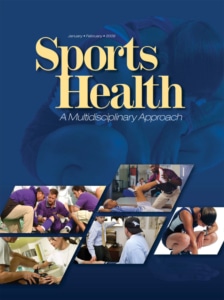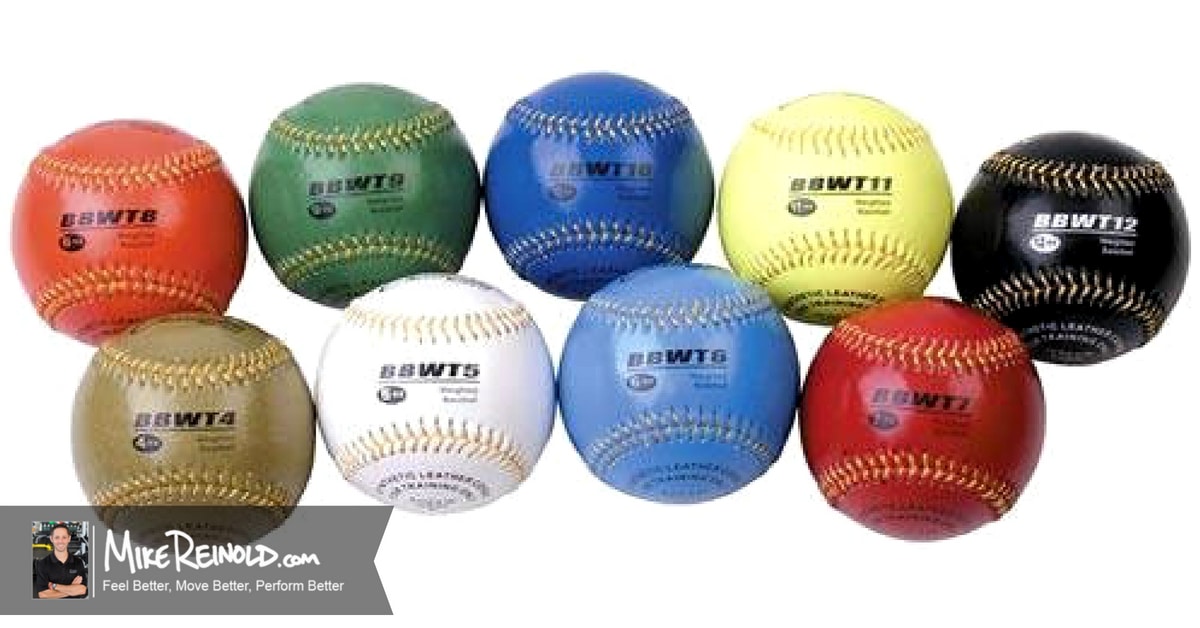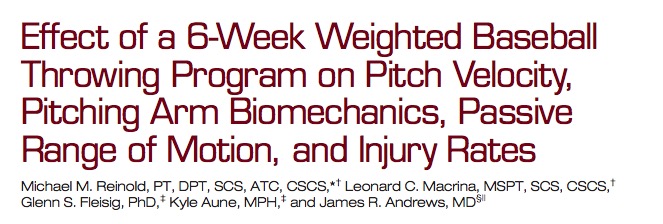 I’m very proud to say that our first research project on the effect of baseball pitchers training with weighted balls has finally been published! Big thanks for my coauthors Lenny Macrina, Dr. Glenn Fleisig, Kyle Aune, and Dr. James Andrews.
I’m very proud to say that our first research project on the effect of baseball pitchers training with weighted balls has finally been published! Big thanks for my coauthors Lenny Macrina, Dr. Glenn Fleisig, Kyle Aune, and Dr. James Andrews.
By now, many people have seen the results of the study. I’ve presented the data at APTA, ASMI, PBATS, Sabermetrics Seminar, and many more as we went through the publication process. We felt this study was very important for the game of baseball as we have seen such a large growth of interest in weighted ball programs, without a complete understand of what happens to the body.
I believe we have found the mechanism behind why throwing weighted balls enhances velocity. It’s not a change in biomechanics, arm speed, or strength. It’s a gain in layback. This likely also explains why these programs are more stressful and show higher injury rates. I’ve written a summary below, but I urge you to read the full study for all the details:
- You can click here to see the entire study over at the Sports Health Journal website
- In case that link breaks one day, here is also a link to the abstract on Pubmed
The Effect of a 6-Week Weighted Ball Training Program on Baseball Pitchers
We performed a 6-week weighted ball training program with high school baseball pitchers.
Players gradually ramped up over the 6-weeks to include kneeling, rocker, and run-and-gun throws with balls ranging from 2oz to 32 oz. All participants had been throwing and weight training prior to prepare for the program. We modeled this off very commonly performed programs. We feel that this program, if anything, is more conservative than many of the programs we have seen. Many other programs are longer, have less of a ramp up, and include balls that are even heavier. Also realize that throwing a heavier ball with less intensity over a longer period of time is likely more stressful on the body, it’s just physics.
The max weight, 32oz, was used for a total of 18 full effort run and gun throws. This represents only 3% of the total balls thrown over a 6-week period.
A control group was used that did not perform the weighted ball program.
After 6 weeks, the weighted ball group did increase velocity by 3.3%. It should be noted, though, that 8% showed no change, and 12% showed a decrease in pitch velocity. Furthermore, 67% of the control group also showed an increase in pitch velocity.
Arm speed and arm strength did not increase, and biomechanics did not change, meaning the gain in velocity was not from any of these commonly theorized reasons. In fact, arm strength was up in the control group, suggesting that a weighted ball program may actually inhibit strength gains.
The weighted ball group showed almost a 5 degree increase in shoulder external rotation, or layback. This has been correlated in previous studies to both velocity and stress on the arm.
The weighted ball group had a 24% injury rate. Half of these did not occur during the study, they occurred the next season, which is an important finding. There were no injuries in the control group.
The Road to Publication
Many people don’t know what happens in the background when conducting studies with sound methodology and peer review with a prestigious journal. So I thought I’d share that process.
It takes weeks to months to go through a credible IRB to assure the project is designed well. It then takes months to conduct the trials to actually acquire the data. This has to be planned well to assure consistency and valid data. It takes weeks to analyze the data, going back and forth with the statisticians to sort through the results to pull out the clinical implications. It then takes months to write the manuscript, remember we are clinical researchers, mean we actually work with clients in the day! We write these in our spare time at night and on weekends. The manuscript is then submitted to a journal, which takes months to get back to you, they likely have hundreds on manuscripts submitted per month. You then work with 3 peer reviewers that take a hard look and criticize the paper. Their goal is to assure the results are reliable, valid, and without bias. You then go back a forth a few times over several months. At this point in time >90% of articles have been rejected, so if you’ve made it this far, congrats! The editor now takes over and we have another back and forth to assure the results are clear and everything is in order. The publisher then reaches out with page proofs for you to approve. Then, magically one day, you get an email with a PDF attached and a link to the publication!
Exhausted just reading that? Yup, me too.
It’s a LOT easier to just type away and hit publish on a blog, but so many questions are unanswered when that happens. Was the study designed properly? Did the procedure follow sound methodology to assure the results are valid? Were the methods reliable? Was there no bias from the authors?
That’s why we felt it was so important to get this data out to the scientific community in a medical journal. Doctors, physical therapists, athletic trainers, and strength coaches need to understand the effects of weighted balls when designed injury prevent, performance enhancement, and rehabilitation programs.
Should You Use Weighted Balls?
Weighted balls are not evil. They are not the cause of injuries.
Throwing itself is the cause. Weighted balls just change the stress to the body.
They can be used strategically if you understand this and build a program that takes the science into account. However, remember there’s more than velocity when it comes to pitching. And science also tells us that there are MANY other ways to enhance velocity that are much less stressful.
Weighted balls are just another tool for us to be used with the right person, at the right time. But that is probably less often than you think. If you are a coach using these programs, you must understand this. There are so many teams now just starting a generic templated program for all players. There is a better way.
The Future of Weighted Ball Research
This study was phase one. We wanted to look at the results of a 6-week program that is commonly performed in high school players. This study has shown us a few very important things and has brought to attention what I believe is the primary reasons weighted balls increase velocity (and injury risk).
We have already finished phase two and phase three. Phase two will look at the effect of different positions and ball weights on the arm, mechanics and velocity. This study will help us understand which positions and balls to use. Phase three will look at the immediate effect of different ball weights on the arm.
Together these three studies will shed a lot of needed light on the use of weighted balls.
Once these papers are finalized, the important part starts. We’ll then work on a clinical commentary paper that summarizes all of our past studies and the science of weight balls. This will be extremely valuable, and an import resource for baseball coaches, parents, and players to read.
There are still many questions to be asked. It’s almost impossible to answer them all, but we are lot closer to understand the true science behind baseball pitchers training with weighted balls.
Help Spread the Word
Want to help? I hope so. Trust me, we are very busy at Champion PT and Performance with baseball injuries. But nothing would please me more than reducing injuries and helping baseball players take it to the next level. How’s that for sincerity.
This info needs to get to the baseball coaches, players, and parents. Please share and spread the word. Thank you!






